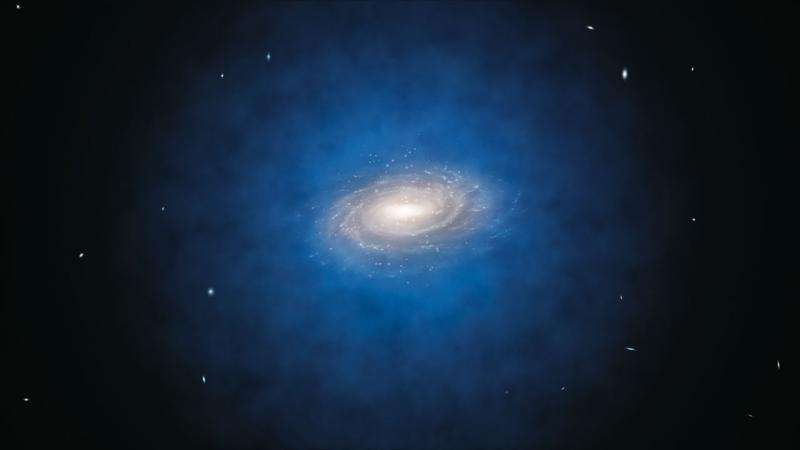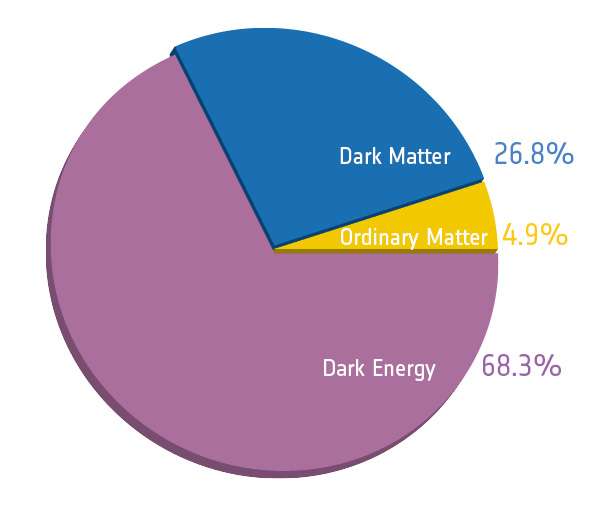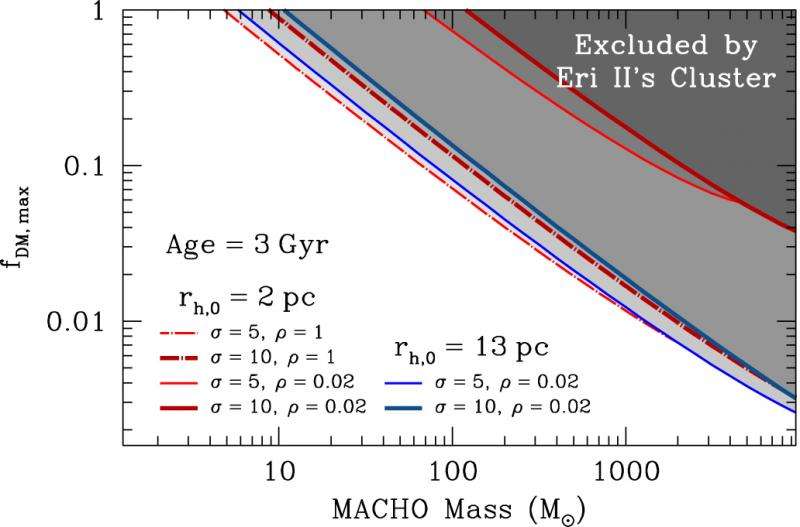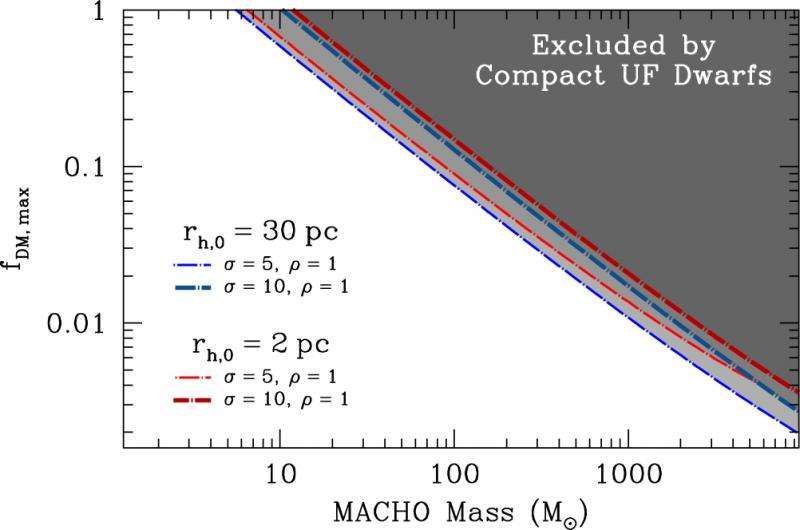How a star cluster ruled out MACHOs

Are massive black holes hiding in the halos of galaxies, making up the majority of the universe's mysterious dark matter? This possibility may have been ruled out by a star cluster in a small galaxy recently discovered orbiting the Milky Way.
Dark Matter Candidates
Roughly 27% of the mass and energy in the observable universe is made up of "dark matter"—matter invisible to us, which is neither accounted for by observable baryonic matter nor dark energy.
What makes up this dark matter? Among the many proposed candidates, one of the least exotic is that of massive compact halo objects, or MACHOs. MACHOs are hypothesized to be black holes that formed in the early universe and now hide in galactic halos. We can't detect light from these objects—but their mass adds to the gravitational pull of galaxies.
So far, MACHOs' prospects aren't looking great. They have not been detected in gravitational lensing surveys, ruling out MACHOs between 10-7 and 30 solar masses as the dominant component of dark matter in our galaxy. MACHOs over 100 solar masses have also been ruled out, due to the existence of fragile wide halo binaries that would have been disrupted by the presence of such large black holes.
But what about MACHOs between 30 and 100 solar masses? In a new study, Timothy Brandt (NASA Sagan Postdoctoral Fellow at the Institute for Advanced Study, in Princeton, NJ) uses a recently discovered faint galaxy, Eridanus II, to place constraints on MACHOs in this mass range.

A Star Cluster in Eri II
Eridanus II is an ultra-faint dwarf galaxy that lies roughly 1.2 million light-years away from us. This dim object is a satellite galaxy of the Milky Way, discovered as part of the Dark Energy Survey. One feature of Eri II is especially intriguing: a single bright star cluster nearly coincident with the galaxy's center.
What makes this cluster so interesting? Ultra-faint dwarf galaxies are dominated by their dark matter content—so if MACHOs make up most of the universe's dark matter content, Eri II should be full of them! But, Brandt points out, interactions between such MACHOs and Eri II's star cluster would result in dynamical heating of the cluster. This would cause the cluster to puff up in size.
Brandt calculates that the compact star cluster observed in Eri II couldn't exist if the galaxy's dark matter is made up of MACHOs of mass >15 solar masses.

Further Constraints From Other Dwarfs
his same argument can be extended to the entire stellar populations of dwarf galaxies. Due to dynamical heating, compact ultra-faint dwarfs would have much larger radii than we observe if their dark matter were in the form of MACHOs.
Brandt shows that the existence of these compact dwarfs rules out dark matter consisting entirely of MACHOs of mass >10 solar masses, closing the gap in our tests of the MACHO model for dark matter. Though black holes hiding in halos could still make up part of the universe's dark matter, an additional culprit will need to be identified to explain the bulk of it.

More information: Timothy D. Brandt. CONSTRAINTS ON MACHO DARK MATTER FROM COMPACT STELLAR SYSTEMS IN ULTRA-FAINT DWARF GALAXIES, The Astrophysical Journal (2016). DOI: 10.3847/2041-8205/824/2/L31
Journal information: Astrophysical Journal
Provided by American Astronomical Society





















